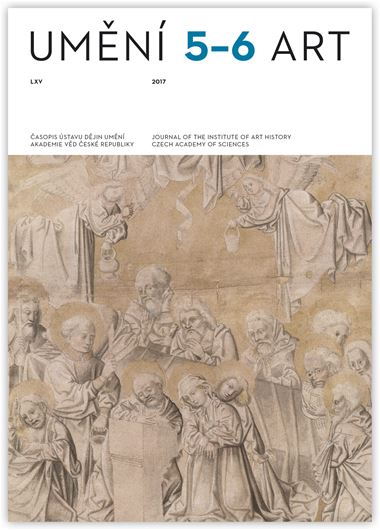Ingeborg Schemper-Sparholz
Zwischen Wien und Böhmisch Krumau — Eine Miszelle zum Werk des Bildhauers Johann Anton Zinner
This paper focuses on the Viennese sculptor Johann Anton Zinner, who to date had enjoyed only little recognition both in the Austrian and the Bohemian research and intends to take a biographical and culturally ample view of the artist. Based on sources, which were previously unknown, several biographical details can be presented and main relationships shown, furthermore three case studies help to reveal the origins of his works of art. As this survey shows, Zinner left a clear mark in Český Krumlov but was always closely related to the Viennese art scene. According to the Vienna Diarium, Johann Anton Zinner was first a pupil of the distinguished court sculptor Lorenzo Mattielli in Vienna. Since the early 1730s, the sculptor appears in the service of several noble patrons, as for example Gabriel Erdödy, bishop of Erlau and Joseph Esterházy’s widow, Maria Octavia Gilleis. From 1745 on, he seems to have been employed mostly in the service of Josef Adam Prince Schwarzenberg and therefore he worked in the gardens of the Schwarzenberg family in Vienna as well as in their possessions located in South Bohemia. In his first works for Josef Adam Prince Schwarzenberg, as the sculptural adornment of the Winter Riding School’s portal in Český Krumlov, Zinner’s origins from the workshop of Lorenzo Mattielli are striking. Zinner’s contacts to the Vienna Academy be- comes most obvious in his reliefs made of clay. Especially his altar relief designed for the castle chapel in Český Krumlov not only reveals the artist’s dependence on Georg Raphael Donner’s compositions and his penchant for material effects but also shows structural analogies to the reliefs of Jacob Christoph Schletterer. In a final step, the paper introduces a previous unknown sculpture of Johann Anton Zinner and thus contributes to the research of the Central Europe baroque sculpture in the middle of the 18th century.
Full-text in the Digital Library of the Czech Academy of Sciences:
https://kramerius.lib.cas.cz/uuid/uuid:6bf6948e-151c-43ce-acf8-102aba7d9cb9
< back

